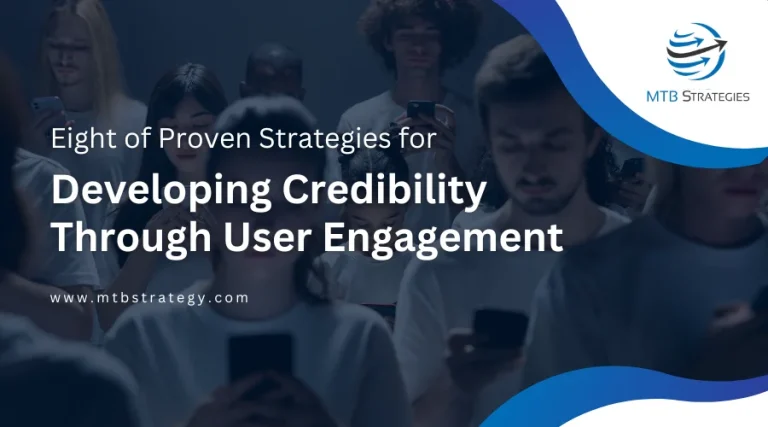Email marketing is a stalwart strategy in the ever-evolving digital marketing landscape. It offers a direct channel for interaction with possible and existing customers, making it a crucial tool for businesses. However, it is not without its challenges. In this blog article, we’ll explore some common email marketing challenges and explore practical solutions to conquer them. Maximize the impact of your online presence with MTB Strategies. Connect with us today for top-notch cross-platform, cross-device websites and unparalleled mobile optimization.
Challenge 1: Acquiring and Sustaining Subscribers
Building and maintaining a robust subscriber base is the foundation of successful email marketing. The challenge lies in not only acquiring subscribers but also retaining them. Implementing double opt-ins, offering valuable content, and optimizing sign-up forms are strategies to attract and keep subscribers engaged.
Challenge 2: Elevated Spam Rates
The dreaded spam folder can be the graveyard for your carefully crafted emails. High spam rates can tarnish your sender’s reputation, affecting deliverability. To combat this, focus on sending relevant and targeted content, avoid spam trigger words, and regularly clean your subscriber list to remove inactive or disengaged users.
Challenge 3: Diminished Open Rates
Low open rates can be disheartening for marketers. The key to boosting available rates is crafting compelling subject lines, segmenting your audience for more personalized content, and conducting A/B testing to optimize your email elements for maximum impact.
Challenge 4: Enhancing Email Personalization
In the era of personalized experiences, generic emails often fall flat. Tailoring your content based on user behavior, preferences, and demographics can significantly enhance engagement. Leverage data to create dynamic content and personalized recommendations that resonate with your audience.
Challenge 5: Addressing Email Deliverability Concerns
Your emails might be well-crafted, but they won’t yield results if they don’t reach the intended inbox. Email deliverability hinges on your sender’s reputation. Understanding what influences it and taking proactive measures is vital for success.
What is the email sender’s reputation?
The reputation of your sender is a rating that Internet service providers (ISPs) give you. Based on your email-sending practices. It reflects how trustworthy and reputable you are as a sender.
Factors affecting sender reputation:
- Email engagement rates (opens, clicks)
- Spam complaints
- Bounce rates
- Email Frequency
How to check your sender reputation:
Utilize tools like Sender Score or Microsoft’s SNDS to monitor your sender reputation regularly.
How to improve sender reputation:
- Send relevant and engaging content
- Authenticate your emails with DKIM and SPF
- Remove inactive subscribers
- Respond promptly to spam complaints
Challenge 6: Improving Click-Through Rates
Click-through rates (CTR) measure the effectiveness of your email in driving user actions. To enhance CTR, focus on creating compelling calls-to-action, optimizing the layout for mobile devices, and utilizing personalized recommendations.
Handling Email Bounces and Unsubscribes
Types of email bounces:
- Soft bounces (temporary issues)
- Hard bounces (permanent issues)
Types of unsubscribes:
- Explicit unsubscribes
- Silent unsubscribes (ignoring emails)
Why email bounces and unsubscribes matter:
High bounce rates can negatively impact your sender’s reputation and deliverability. Unsubscribes, while inevitable, provide valuable insights into user preferences.
Preventing email bounces and unsubscribes:
- Maintain a clean and updated email list
- Set clear expectations during the sign-up process
- Provide easy-to-find unsubscribe options
Handling email bounces and unsubscribes:
- Analyze bounce reasons
- Implement re-engagement campaigns
- Respect unsubscribe requests promptly
Effectively handling bounced emails and unsubscribes is crucial for keeping your email marketing in good shape. The appropriate tools can help to simplify this. and help marketers make smart choices. Let’s take a closer look at how popular email marketing platforms like Mailchimp, Constant Contact, and HubSpot have tools built in to keep an eye on and manage bounced emails and unsubscribes.
Mailchimp:
Monitoring and Reporting: Mailchimp gives you detailed reports about bounce rates. This helps you see patterns and potential problems. The platform sorts bounce into “soft” and “hard,” giving you a better idea of what caused the bounce.
List Cleaning: Mailchimp’s cleaning tools help you find and remove email addresses that are not active or valid. This keeps your list tidy, which is good for your reputation as a sender.
Automation for Re-engagement: Using its workflow automation, you can set up automatic re-engagement campaigns in Mailchimp. This means you can target people who haven’t been interested lately, encouraging them to check out your emails again.
Unsubscribe Tracking: Mailchimp has strong tracking for when people unsubscribe. This lets you watch and understand why they decided to stop getting your emails. Learning from this info can help shape your content strategy and lower future unsubscribes.
Constant Contact:
Advanced Reporting: Constant Contact has special tools that give you important information about your emails. You can see details about how many emails bounced, how many were opened, and how many people unsubscribed. These facts help you determine how well your email plans work and make changes based on the data.
List Segmentation: In Constant Contact, you can divide your list into smaller groups based on how many people are interested. This way, you can send them content that fits their interests, making your emails more interesting. Doing this can also lower the chances of people bouncing or unsubscribing.
Automatic List Management: Constant Contact takes care of your email list automatically by removing addresses that don’t work and managing people who unsubscribe. You don’t have to worry about it – this hands-free way keeps your list updated and follows rules to avoid spam.
Feedback Loop Integration: Constant Contact connects with big internet companies to get feedback about your emails. If users complain, you’ll know right away. This helps you fix problems fast, keeping your reputation as a sender safe.
HubSpot:
Detailed Analytics: HubSpot gives detailed information about how well your emails are doing, including if people are bouncing or unsubscribing. This helps you make your emails better and more interesting.
Smart Lists: HubSpot’s Smart Lists change automatically based on what users do, ensuring you always send them things they care about. When you aim at the right audience, you can lower the chance of people bouncing or unsubscribing.
Personalization for Re-engagement: Use HubSpot’s personalization tools to reconnect with subscribers who aren’t as active. When you make things more personal, it can get them interested again and stop them from unsubscribing.
Integration with CRM: HubSpot works well with its CRM platform, showing how customers interact with you. This helps keep your customer information accurate so you don’t accidentally send emails to the wrong addresses.
Conclusion:
There are always challenges in email marketing, but if we use smart strategies and the right tools, we can turn them into chances to grow. Getting and keeping subscribers, stopping spam, making more people open our emails, personalizing content, ensuring emails get delivered, and getting more clicks are important for a successful email campaign. If we learn how things work and use the best ways of doing things, we can handle these challenges, make good connections, and get results in the digital world.






